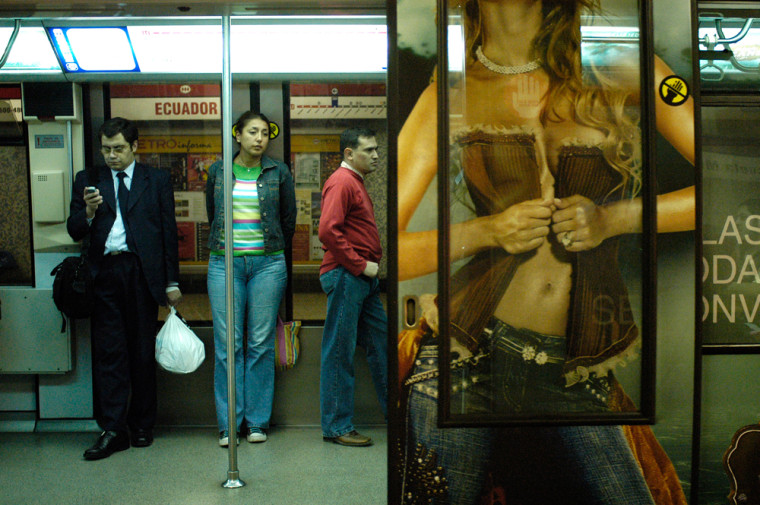The last thing Chicago commuters expected to see from the windows of their speeding subway train was a smiling model.
The dark-haired woman glanced at her silky legs, and the image dissolved to show a tube of moisturizer just before the train reached the downtown Washington Street station.
The advertising clip for Aveeno's Continuous Radiance, made by Johnson & Johnson, stuck with commuters who barely noticed the products pushed on posters plastering the walls of the trains and stations.
In dark subways tunnels from Toronto to Hong Kong, commercials are flickering to life as companies place advertisements in unusual spots to stand out in a world littered with product pitches.
Mini-television ads are popping up inside elevators, atop gas pumps and other places where the audience is captive and perhaps a little bored.
It's all in response to an increasing tendency by television viewers to skip commercials through recording technology such as TiVo Inc. or by downloading shows.
"They're putting the traditional medium of TV in a new environment where you don't expect it," said Jack Sullivan, senior vice president and out-of-home media director at Starcom USA in Chicago, part of the Publicis Groupe.
The underground transit commercials are particularly effective, he said. "You're sitting in the subway, and all of the sudden an ad pops up outside the car."
Advertising companies boast that more than 80 percent of consumers remember the product advertised, compared with a roughly 20 percent recall for television commercials.
"With TiVo, they're just skipping through the ads," said Peter Corrigan, chief executive of Submedia LLC, a leader in this new field. "You take the same ad and put it in the subway and not only will they look at it, they'll remember it."
Submedia launched its service in Atlanta in 2001. The privately held company has since installed ads in subway tunnels underneath New York City, where it is based, as well as Chicago; Washington; Mexico City; Hong Kong; Tokyo; Bucharest, Romania; and Istanbul, Turkey. Plans also call for campaigns in Paris and Kiev, Ukraine.
Submedia jointly markets advertising space with rival SideTrack Technologies Inc. of Winnipeg, Canada. SideTrack has ads in subway tunnels in Boston; San Francisco; Mexico City; Rio de Janeiro, Brazil; and Toronto.
Rates range from $25,000 to $140,000 a month. On average, the subway system gets 35 percent of the revenue generated, Corrigan said.
About 50 companies, including many auto manufacturers, have bought space during the past five years, Corrigan said. The car makers relish the opportunity to showcase their sport coupes and sport utility vehicles in motion somewhere other than on a television set.
Coca-Cola Co. used transit advertising in Atlanta to promote Dasani bottled water in 2001, but has not repeated the experiment.
"We liked the results, but it's not something we're actively pursing," said spokeswoman Susan McDermott. "It's just not part of our national planning at this point, but you can't limit yourself to the traditional ways companies have advertised."
The technology that creates the commercials is a sophisticated version of the old cartoon flip book that creates the illusion of moving pictures.
Lighted strips half an inch wide and 3 feet high are mounted on subway walls. When the train moves past, even as slowly as 3 miles per hour, the strips appear to run together to create the illusion of a moving picture.
The ads are placed near stations, which is where advertising companies believe riders are most alert and most likely to glance out the window.
First-time viewers are often startled when the pictures appear outside their windows, but regular commuters find them a pleasant distraction.
"They're pretty interesting, especially when they have a lot of movement," said Blanca Juarez, who works at a downtown law firm. "I keep an eye out for the new ads."
